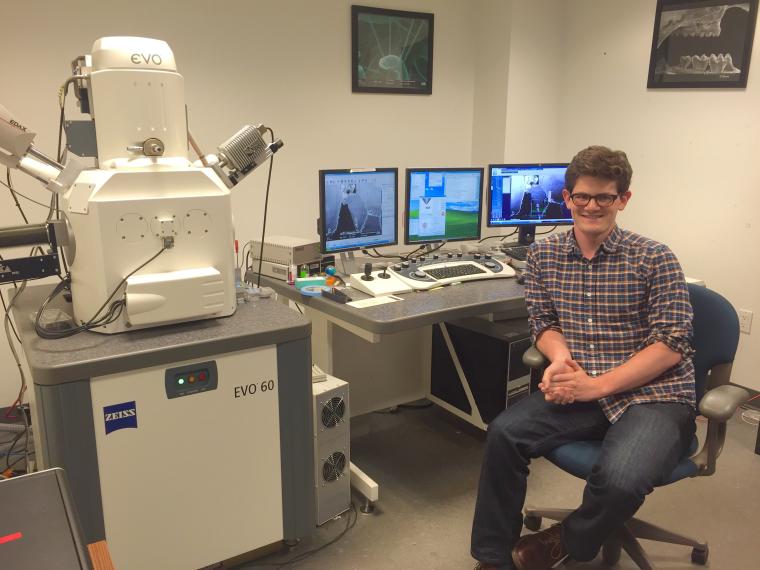Dinosaur Bones and Meteorites
September 28, 2015
Kasey Cheydleur

“In a given day we can work with dinosaur bone, meteorites, or 100-million-year-old ants trapped in amber,” says Henry Towbin ’13, who currently works at the American Museum of Natural History in New York. In addition to attracting more than 4 million visitors per year, the museum is also a fully functioning research institution, with departments for the biological sciences, earth and planetary sciences, astrophysics, and anthropology. Towbin works as a lab technician and leads an interdepartmental lab that specializes in imaging equipment, like electron microscopy and micro-scale X-ray computed topography. He uses these technologies to build digital models and gather data to solve natural history questions relating to evolution, biomechanics, geochemistry, and crystal structure.
Towbin says the facility is unique because it is free to use for museum-associated researchers from across New York, which reduces the barriers to learning new skills and pursuing new projects. Most of the lab’s users are curators, PhD students, and visiting scientists. “I am working with scientists across all the disciplines of biology, geology, and anthropology,” Towbin says. “I love the passion and excitement they bring to their work. Often we look at structures never before visualized. Every project is an adventure.”
He found the job after his research advisor, Professor of Geology Zeb Page, saw it posted on a geology forum and sent it around to all the seniors in the department. Towbin says his project with Page, particularly with the scanning electron microscope, directly prepared him for his job at the museum. He has even been able to use the museum resources to continue researching the topic of his honors project with Page, the metamorphic history of high temperature and pressure rocks from Santa Catalina Island in California.
Looking to the future, Towbin says he is considering PhD programs in geology and material sciences so he can continue to investigate a wide array of scientific problems.
Tags:
You may also like…
Oberlin Named Top Producer of Fulbright Students for 2024-25
February 25, 2025
Nineteen Oberlin College and Conservatory students and alumni were awarded Fulbright grants for the 2024-25 academic year, making the college the No. 1 producer of honorees among U.S. undergraduate-only institutions.
Beyond the Writing Center: Abbie Patchen ’24
November 7, 2024
Abbie Patchen ’24 is a JD candidate at the UNC School of Law. At Oberlin Abbie minored in Writing & Communication. Here, she reflects on how her Oberlin courses and professors shaped her approach to learning and writing.
Omar Tells His Story
October 11, 2024
This December, Oberlin will present a concert version of Rhiannon Giddens’ award-winning opera, both at Finney Chapel in Oberlin and the Maltz Performing Arts Center in Cleveland. Surrounding it are all kinds of cross-disciplinary events for campus and community.


